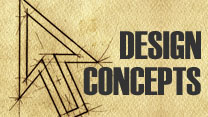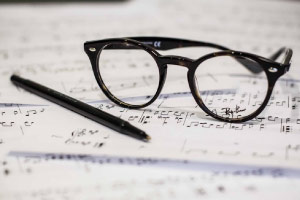Online courses directory (78)
This course is an introduction to the major methodologies that have been and are used by art historians. Although not a history of art history per se, it is organized in a roughly chronological order that traces major methodological developments within the discipline from the birth of art history in the nineteenth century through the late twentieth century. By focusing on several outstanding historical and critical readings, as well as secondary discussions of different types of art historical analysis, the student will be introduced to some of the major methodologies that have shaped the field: formalism, biographical analysis, connoisseurship, technical analysis, iconographical analysis, psychoanalysis, Marxism and the social history of art, feminism, post-colonialism, and semiotics. The course will also examine how artworks are displayed in modern art museums. After completing this course, you will be able to explain the strengths and weaknesses of different art historical methodologies and explain…
This course serves as an introduction to the pre-modern Islamic artistic traditions of the Mediterranean, Near East, and Central and South Asia. This course is organized around the major dynasties under which Islamic art and architecture were produced. The first unit surveys core Islamic beliefs, the basic characteristics of Islamic art and architecture, and art and architecture created under the patronage of the Umayyads (632-750) and the Muslim rulers of Spain. The second unit focuses on the artistic and architectural innovations of the Abbasids (738-1250) and Seljuks (c.1040-1157), as well as the regional rulers of Anatolia and the Maghreb. The third unit looks at the art and architecture of three successive Islamic dynasties based in Egypt: the Fatimids (909-1171), Ayyubids (1171-1250), and Mamluks (1250-1517). Unit 4 examines the art and architecture of the Ilkhanid (1256-1353) and Timurid (c. 1370-1507) dynasties in Iran and Central Asia. The final unit presents the art and architecture of thr…
This course will introduce you to the art and architecture of the African continent from the prehistoric to the present. The objects, images, and sites featured in this course represent a small cross-section of the diverse ethnic and artistic heritage in Africa. This course emphasizes the role of art as manifested in the lifestyles, spiritualities, and philosophies of particular African societies, while also breaching aesthetic principles and the study and display of African art. Many works produced in Africa are used for spiritual purposes that include ritual and performance. The study of masks and ceremonies will enable you to become more familiar with the significant role art plays in the everyday lives of the citizens of African nations. For example, most traditional African art was not meant to be displayed, but rather viewed in use and in motion, especially in mixed-media masquerades. Body adornment and textiles have long been important forms of visual communication and expression in Africa, whereas pai…
This course serves as an introduction to the major pre-Modern artistic traditions of India, China, and Japan. It is organized into three units that focus on the art and architecture of India, China, and Japan respectively. Each unit is structured chronologically. Unit 1 examines Indian Art from the Indus Valley Civilization (c. 2600-1900 BCE) through the art of the Mughal Empire (1526-1858), focusing on Buddhist, Hindu, and Islamic art and architecture. Unit 2 covers the arts of China from the Shang Dynasty (c.1600-1050 BCE) through the Qing Dynasty (1644-1911), detailing the interaction between art, politics, and culture throughout Chinese dynastic history. Unit 3 introduces Japanese Art from the Jomon Period (c.10,500-300 BCE) through the Edo Period (1615-1868), exploring the effects that various sub-traditions and sub-cultures (Tang Dynasty China, Buddhism, and the warrior class) had on the art of Japan. After completing this course, you will have a comprehensive understanding of the arts and a…
A chronological and thematic survey of the major themes and developments in the history of Latin American art, this course traces the evolution of visual culture over approximately four millennia. Organized into three parts, the course begins with the pre-Columbian period (1800 BC to AD 1492), moves into the years of European contact and conquest (AD 1492 to 1800), and concludes with an overview of modern and contemporary art across the Americas. You will learn to identify and describe works of art and discuss the broader historical and social contexts in which they were produced and circulated. The first part of the course will introduce you to the major artistic achievements and archaeological record of the ancient Mesoamerican and Andean cultures: monumental architecture, urban planning, painting, sculpture, and portable arts. The study of colonial art focuses on Mexico, Peru, and Brazil, introducing concepts of artistic hybridity and diversity, indigenous and national cultures, and transatlantic e…
In this course, we will study the history of Eastern (Orthodox) Christian art. The course begins with an overview of the emergence of Christianity in the Late Antique period and the formation of the Christian visual language that grew out of the Classical tradition. The course then follows the development of Christian art after the fall of the Roman Empire and the emergence of a “new Rome” in the East: the Byzantine Empire. A series of reading assignments paired with lectures and virtual tours will introduce you to important works of Early Christian and Byzantine art and will also give you an understanding of the central debates of Early Christian and Byzantine art historical scholarship. By the time you finish the course, you will be able to identify the most important artworks from this period and understand how their appearances relate to the social, political, and religious environment in which they were produced. You will also be able to trace the ways in which Early Christian and Byzantine…
This course serves as an introduction to the Buddhist artistic traditions of South, Southeast, and East Asia, as well as the Himalayas. It is organized into four units based on the development of Buddhist schools and artistic traditions in Southeast Asia, the Himalayas, and China, Korea, and Japan. The first unit surveys the core tenets of Buddhism, Buddhist iconography, and early Buddhist art and architecture in India. The second unit reviews the development of Buddhist art and architecture in Southeast Asia, focusing on the patronage of Theravada and Mahayana Buddhism by rulers in the modern countries of Indonesia, Cambodia, Myanmar, and Thailand. Unit three examines the particular form of Vajrayana Buddhism and its artistic traditions that developed in the Himalayas. The final unit traces the spread of Mahayana Buddhist art and architecture into China and later into Korea and Japan via the Silk Roads. All four units highlight the interaction between Buddhist doctrine, art, and architecture; Bud…
In common conversation, we often use the phrase “contemporary art” to refer to current artistic productionthe art being produced today. However, in the art history field, the phrase denotes a specific period of art and artistic practice starting in the 1960s and continuing today. It is characterized by a break from the modernist artistic canon and a desire to move away from the dominant Western cultural model, looking for inspiration in everyday and popular culture. More specifically, many contemporary artworks reject traditional modernistic artistic media (such as painting or sculpture) in favor of a more collaborative, ephemeral, and multimedia approach that further blurs the boundaries between high and mass culture. In its subject matter, this art also tends to reflect a shift away from purely aesthetic issues to more socially oriented concerns. Finally, it is important to note that contemporary art should not be seen as a progression of different artistic styles but as series of different cu…
In this course, we will study the architecture of Ancient Rome, beginning with its origins in the eighth century BC, and continuing through the fourth century AD with the move of the Roman capital to Constantinople. The course of lectures and readings outlined below will familiarize you with the major building methods and styles used in Roman architecture. In addition, interior decoration (including the very important topic of Roman wall painting) will be addressed. By the end of the course, you will be able to identify some of the most important works of Roman architecture and discuss the historical and cultural conditions that informed their production. An important theme throughout the first half of the course is the relationship between Ancient Rome and Greek and Etruscan cultures, which were highly influential in the formation of a distinctive Roman architecture. Understanding the role that Roman architecture played in the eastern and western Roman provinces is also significant to this course,…
Learn from a veteran TV comedy writer how to write professional sitcom scripts and how to break into show business.
Graphic designers, artists, photographers and all those involved in the visual arts need an accurate understanding of colour theory. This free online course from ALISON presents aspects of colour and light perception such as hue, lightness and chroma, brightness and saturation, visual perception of colour, mixing paints, and additive and subtractive colour mixing. The comprehensive text is accompanied by interactive graphics that further explain the concepts. This course is ideal for any learner who practices the visual arts, either professionally or as a hobby, and who wants to greatly enhance their knowledge and understanding of colour theory.
This Graphic Design course builds on the introductory course and investigates the application of graphic design principals in the production process such as composition, balance, contrast and hierarchy. It is suitable for students studying graphic design, and designers and artists working in the graphic design industry. <br />
Do you see yourself as a non-creative individual? Do you want to learn to effectively design and create sharper and more successful websites and graphics from the ground up? This course will teach the basics plus a whole lot more to help get you on the road to creating, designing and implementing solid designs for the web! In this introductory course, basic design thinking, theory and practice will be explored in an easy to absorb, fun and relaxed environment. Students will begin by understanding and implementing the foundations of design: the basic elements and principles of design. These elements and principles are applicable to all design mediums such as architecture, art, graphic design, photography, print and web design. Special emphasis will be given to the application of these principles and elements, along with color and typography, to the medium of web design. For students who have not had formal training in design, this course will bring them up to speed with the fundamentals of design, while learning how to apply these concepts to web and graphic design. For students who have received previous design training, this course will offer new techniques, tips and tricks, and new ways of thinking of design fundamentals while applying these concepts to the electronic mediums of web design and graphics for the web.
Digital photography technology is continually changing, however, the principles behind good photography don't. ALISON's free online photo course gives you the opportunity to gain extensive knowledge and understanding of digital photography including topics such as exposure settings, how to read and use the histogram, how light affects a photograph, how the camera sensor and lenses work, and how to process a photograph using computer software. You will also learn tips and techniques on what not to do when taking a photograph. <br /><br />ALISON's free online course is ideal for those who wish to increase their understanding of digital photography and want to know how to process and produce photographs digitally.<br />
Intro to Animation. Incrementing Shortcuts. If Statements.
Mouse Interaction. mouseIsPressed. keyIsPressed. keyCode.
The beginning of the 21st century has been called the Information Age because of rapid increases in information and information resources. Information literacy is now a core competency mandated by higher education accreditation associations for almost all U.S. colleges and universities. It goes far beyond simple web searches and equips students with the research skills necessary to find, evaluate, and appropriately use the types of information required for college level research. This course is geared toward college students, especially those majoring in art and design, but will be useful to anyone who wants to become a more effective searcher. Students will explore the “deep web” (information not found through search engines) and experiment with various search strategies and filtering techniques. Students will also be encouraged to explore resources found in local libraries.
This course will focus on Western classical music of the eighteenth and nineteenth centuries; it is designed for people who are passionate about classical music but who have not necessarily had any advanced training or taken any college-level music courses. The only prerequisite is a basic knowledge of how to read musical notation.
Music theory, one of our top online music classes, is the analysation of how music works - by studying the notation and language of music. Unlike other online music lessons, Introduction to Music Theory introduces the basic concepts and terms needed to discuss melody and harmony. Concepts covered include interval, major and minor keys and scales, triads, chords and beginning harmonic analysis.<br />The course is suitable for teens or adults with no background in music theory but some familiarity with reading common notation and playing an instrument (or singing).<br />
Trusted paper writing service WriteMyPaper.Today will write the papers of any difficulty.










